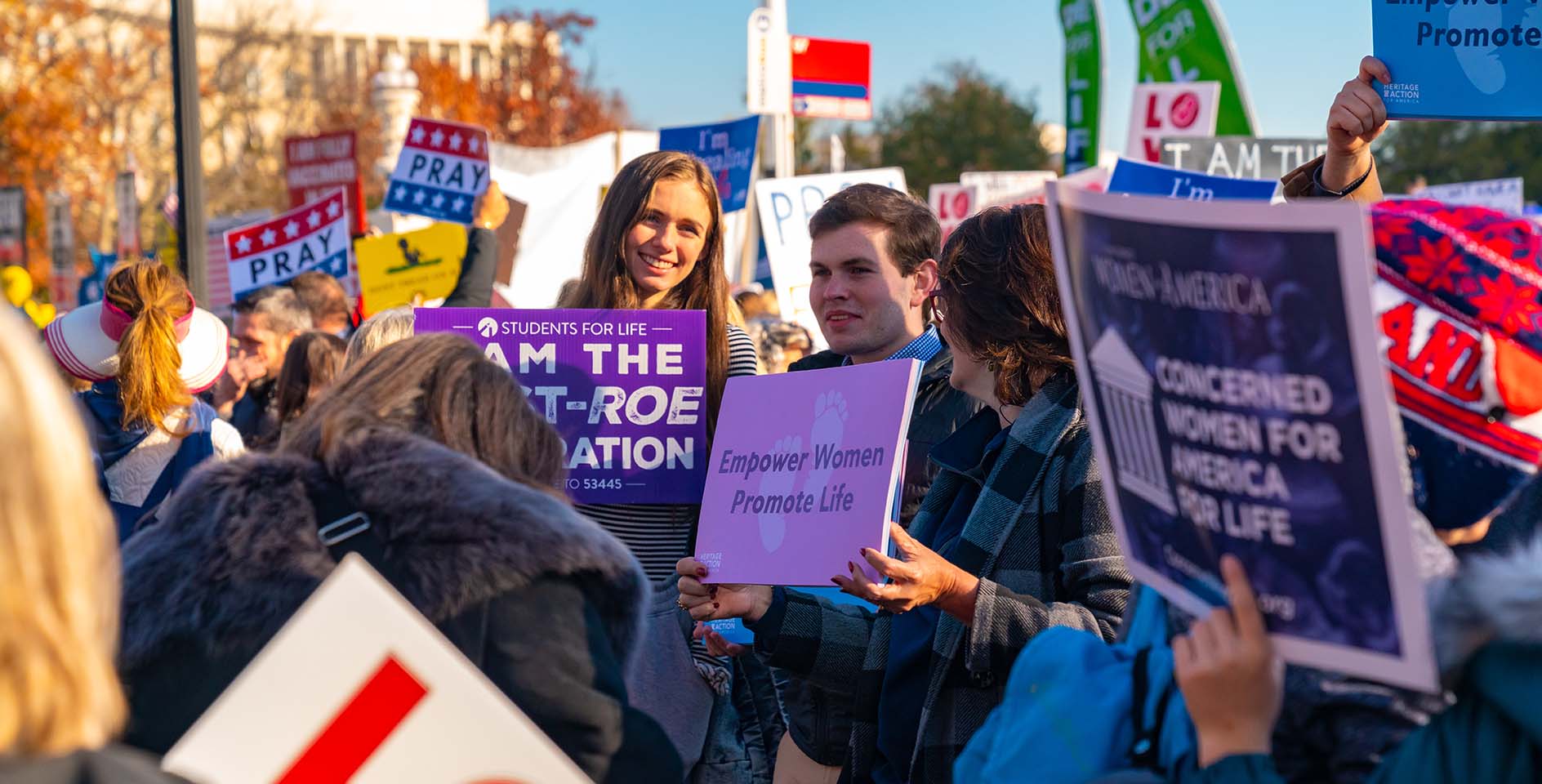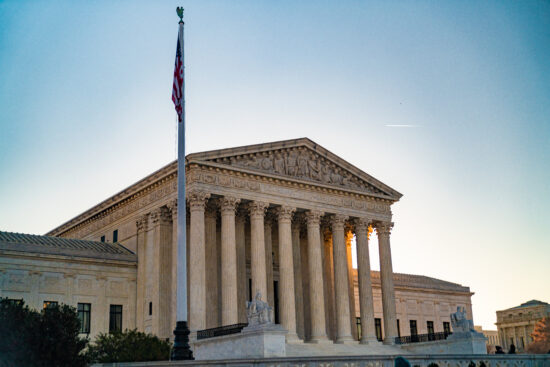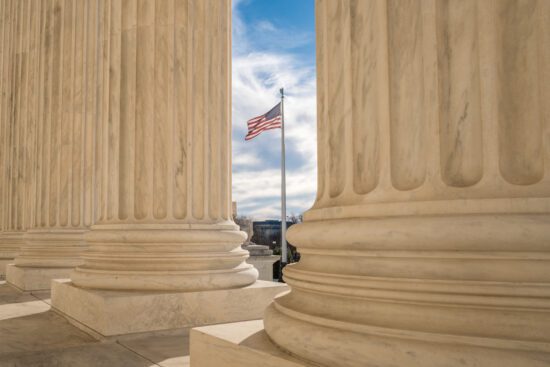Today, the U.S. Supreme Court, in a landmark decision, held that “the Constitution does not confer a right to abortion; Roe and Casey are overruled; and the authority to regulate abortion is returned to the people and their elected representatives.”
This is the most significant moment in the pro-life movement in decades, and we should rightly celebrate this decision that will save thousands of precious preborn lives. In a 6-3 decision, the Court upheld the Mississippi abortion law regulating abortion at 15 weeks, which was at the center of the case. However, Chief Justice John Roberts did not join the other five justices of majority in overturning the horrendous precedent set in both Roe v. Wade and Planned Parenthood v. Casey.
What is the Dobbs case about?
In December 2021, the Supreme Court heard oral arguments in a case titled, Dobbs v. Jackson Women’s Health Organization. The justices were reviewing a Mississippi law titled the “Gestational Age Act” that prohibited abortions after 15 weeks’ gestation, except in a medical emergency and in cases of severe fetal abnormality. This law replaced and directly challenged the ‘viability standard’ created by Roe and Casey. The court examined whether pre-viability restrictions on elective abortions are unconstitutional.
In Roe v. Wade, the Supreme Court admitted that the state has a legitimate interest in protecting unborn human life, but concluded that that interest did not become compelling until viability, because at that point the unborn child “has the capability of meaningful life outside the mother’s womb.” However, the choice of viability as the point before which a state may not forbid abortion is entirely arbitrary. Even the author of Roe and two authors of Casey’s three-justice plurality have admitted this. When the “viability standard” was initially created in 1973, viability was around 28 weeks, but it is now around 21 weeks. The viability line will keep moving as our modern medicine continues to improve. No Supreme Court decision has ever provided a principled justification for the viability standard.
The Dobbs case hit at the heart of the precedents that were set in Roe and Casey, and in its litigation, Mississippi boldly asked the court to overturn those two cases.
How did the justices rule in the Dobbs case?
In the majority opinion, Justice Alito makes the case for why Roe and Casey must be overruled through a historical analysis of abortion laws as well as considering the issue of stare decisis. Through this analysis, the justices definitively state:
We hold that Roe and Casey must be overruled. The Constitution makes no reference to abortion, and no such right is implicitly protected by any constitutional provision, including the one on which the defenders of Roe and Casey now chiefly rely – the Due Process Clause of the Fourteenth Amendment.
In considering the doctrine of stare decisis and overturning long-held precedent, Justice Alito wrote:
Stare decisis, the doctrine on which Casey’s controlling opinion was based, does not compel unending adherence to Roe’s abuse of judicial authority. Roe was egregiously wrong from the start. Its reasoning was exceptionally weak, and the decision has had damaging consequences . . . It is time to heed the Constitution and return the issue of abortion to the people’s elected representatives. ‘The permissibility of abortion, and the limitations, upon it, are to be resolved like most important questions in our democracy: by citizens trying to persuade one another and then voting.’
The justices found that the decisions in Roe and Casey inflamed national tensions on this deeply moral issue, and that, ultimately, these decisions should be left to the states:
Roe was on a collision course with the Constitution from the day it was decided, Casey perpetuated its errors, and those errors do not concern some arcane corner of the law of little importance to the American people. Rather, wielding nothing but ‘raw judicial power,’ the Court usurped the power to address a question of profound moral and social importance that the Constitution unequivocally leaves for the people. Casey described itself as calling both sides of the national controversy to resolve their debate, but in doing so, Casey necessarily declared a winning side. Those on the losing side—those who sought to advance the State’s interest in fetal life—could no longer seek to persuade their elected representatives to adopt policies consistent with their views. The Court short-circuited the democratic process by closing it to the large number of Americans who dissented in any respect from Roe.
You can read more important quotes from the decision here.
Why does this ruling matter?
Today is the most significant pro-life moment in a generation. The Dobbs case enabled the court to overturn the “egregiously wrong” precedent set in Roe and Casey, which were decisions that were set “on a collision course with the Constitution from the day [they were] decided.” Because of today’s ruling, thousands of preborn babies in multiple states across the country will now possess their most fundamental right—the right to life.
In his concurring opinion, Justice Kavanaugh notes that “the Court’s decision today does not outlaw abortion throughout the United States.” Rather, each state is now free to set their own laws banning or allowing abortion. An estimated 26 states will soon implement complete bans on abortion. States including Arkansas, Idaho, Kentucky, Louisiana, Mississippi, Missouri, North Dakota, Oklahoma, South Dakota, Tennessee, Texas, Utah, and Wyoming have trigger laws which will immediately or in the near future make abortion illegal in most cases. Other states have laws that will keep abortion legal and accessible.
This decision, rather than marking the end of the pro-life movement, will instead launch a new chapter as advocates turn their attention to protecting life in statehouses across the country and stopping the proliferation of chemical abortions. In addition, now that abortion becomes illegal in many states, many more vulnerable women and their preborn babies will need help and support. Christians must continue to stand in the gap and provide love, care, compassion, resources, and the good news of the gospel. Together, we must work toward a day when abortion is not only illegal but also unthinkable. Southern Baptists have long pleaded the case for America to recognize the inherent dignity of our most vulnerable neighbors, because Scripture tells us that every single life has been created in God’s image and therefore has innate worth and value.
Brent Leatherwood, ERLC’s acting president, calls the Supreme Court’s decision a “true turning point in the pro-life movement.” He goes on to say, “More lives are now protected today than yesterday. The release of the Dobbs decision marks a true turning point in the pro-life movement, a moment that Christians, advocates and many others have worked toward tirelessly for 50 years. Their commitment to uphold human dignity and justice has achieved the most significant victory in the history of the pro-life movement.” Watch Brent’s reaction to today’s ruling here.
How did the ERLC engage this case?
The ERLC was part of an amicus brief in this case, requesting the Supreme Court overturn the long line of abortion precedent beginning with Roe v. Wade and extended by Planned Parenthood v. Casey, both of which are decisions that have prevented states from prohibiting abortion. The ERLC’s brief asserted that “The Constitution does not create a right to an abortion of an unborn child before viability or at any other stage of pregnancy. An asserted right to abortion has no basis in constitutional text or in American history and tradition.”
The ERLC has also worked with pastors, ministry leaders and congregations to prepare them for this post-Roe moment and will continue to walk alongside churches and states as they work to continue to protect preborn babies and care for their moms and dads.
What’s next?
“As this chapter comes to a close, we must understand this is not the end of our important work,” Leatherwood reminds us. “The issue of abortion has now been turned over to the states, many of which have either implemented or are considering some of the most abhorrently permissive pro-abortion proposals ever. A consistent, convictional pro-life witness is needed now more than ever in state legislatures and local communities. So let us rejoice that we live in a nation where past injustices can still be corrected, as we also roll our sleeves up to save preborn lives, serve vulnerable mothers, and support families in our communities.”
Christians will continue to have the opportunity to care for preborn babies, their mothers and fathers, and proclaim the good news of the gospel. May we redouble our resolve to be on the frontlines of caring for the most vulnerable among us.






